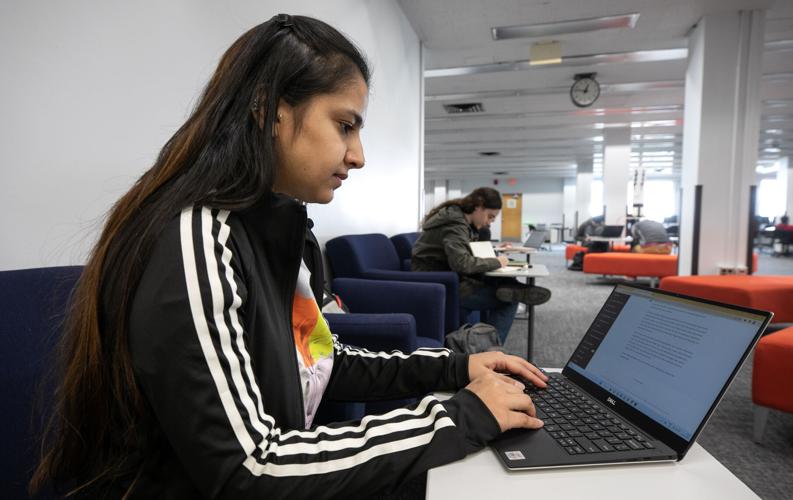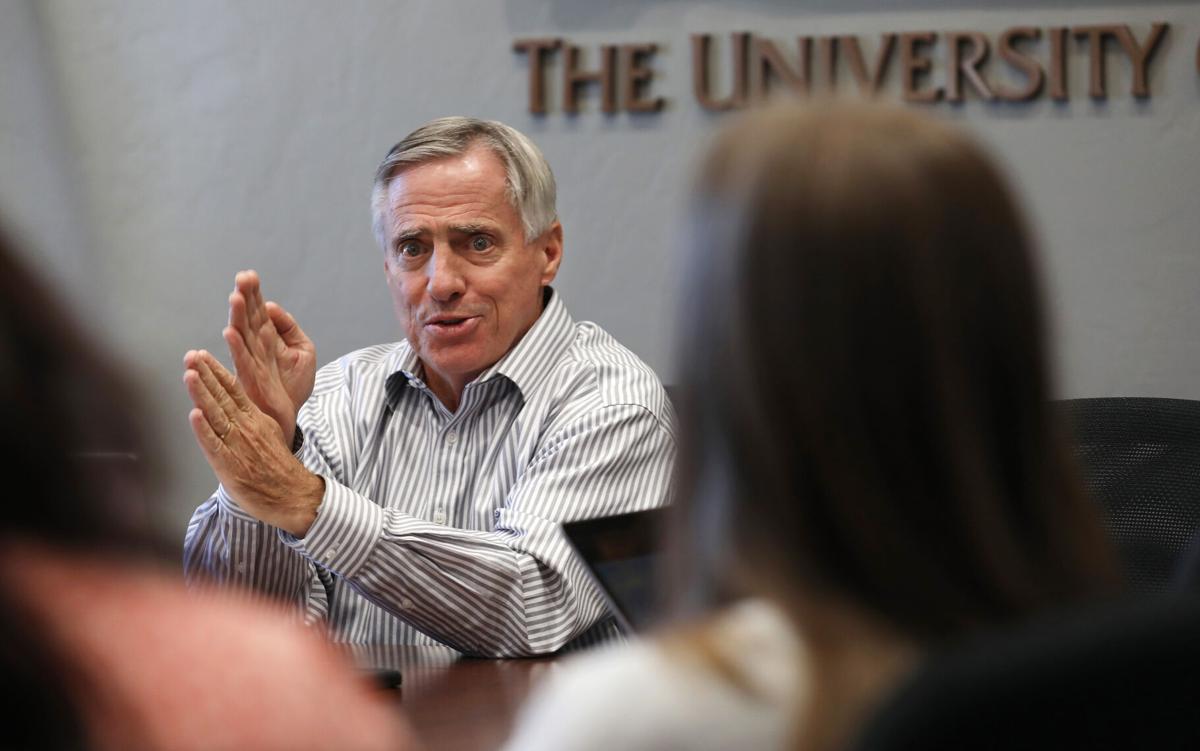When Logan Sandlin first tried using ChatGPT — the new artificial intelligence software that can write essays, formulate code and assist users in a conversational way — he was worried.
“It scared me because my first thought was ‘Oh my God, I’m not going to have a job,’ “ said Sandlin, a junior computer science and math major at the University of Arizona. “But then I learned more about it, and I was like ‘OK, there’s still a job for me.’ It’s making more things like this.”
Before he’s ready to look for a job in the rapidly changing field of computer science, Sandlin still has some coursework to finish to get his degree. And he’s using ChatGPT to help him get there.
“It’s always involved when I’m doing homework. It makes things so much more streamlined,” he said. Before ChatGPT, Sandlin said that if a homework problem stumped him, he’d spend some time searching Google for help from computer science message boards. That could be a time-consuming process with no guarantee of finding a solution.
“Or you can ask ChatGPT and it comes up with an answer right away,” he said. “And even if it’s not a perfect answer it always puts me on the right path to finding the answer.”
30% of college students use it
Sandlin is far from the only student who’s tapped ChatGPT for homework help.
Since San Francisco-based company OpenAI debuted ChatGPT last November, 30% of American college students say they have used the technology to help with assignments; 60% of those students used it to help with at least half of their workload, according to a survey of 1,000 people the online magazine Intelligent produced.
In two recent experiments, ChatGPT was able to pass written exams (though its scores weren’t better than the average human student’s) at the University of Minnesota Law School and the University of Pennsylvania’s Wharton School of Business, CNN reported last month.
The emergence of this powerful new technology has some education leaders sounding alarms about a new era of academic dishonesty.
Several public school districts, including in Seattle, Oakland and New York City, have banned or limited the use of the software, citing concerns about cheating.
In the higher education world, however, the reaction has been more tempered, and most colleges and universities in the U.S. are leaving it up to individual professors and instructors to decide how they want to handle the use of ChatGPT in the classroom.
UA: Don’t ‘fight against it’
That’s the approach the UA, whose academic integrity code prohibits students from using any tool to plagiarize, is taking.
“The wrong thing to do is to try and fight against the technology,” said Greg Heileman, an electrical and computer engineering professor and vice provost of undergraduate education at the UA.
“The right thing to do is to develop exercises that account for the fact that students may be using (ChatGPT),” he said. “The people who employ our students will be expecting them to use these types of tools, so we should make that part of what we teach them as well.”
According to the UA’s dean of students, there have been no reports of academic integrity violations involving ChatGPT or other AI software at the university to date.
“The real challenge with ChatGPT,” Heileman said, “is in detecting this prohibited conduct.”
But because it can be so difficult to tell the difference between a research paper written by ChatGPT and one by a student with mediocre writing ability, Heileman said that should be enough of a nudge for professors to develop assignments that require higher-level critical thinking.
“I’m not advocating for anyone to cheat,” said Heileman, who has personally used other AI software to assist him with his work for years. “If a student becomes reliant on this and it allows them to avoid learning, then that’s a huge problem.”
But the current panic about ChatGPT — that it’s coming for our jobs and will undermine our education institutions — follows a historical pattern of humans reacting to new technology that disrupts the status quo.
Human creativity is key
“Recall that the calculator was supposed to make everyone bad at math,” Heileman said. “But in fact, we can teach people better now because they don’t have to spend time doing mundane calculations.”
Now, almost 60 years after the modern calculator struck fear into the hearts of math teachers, ChatGPT’s ability to do basic coding and write a C-quality research paper “frees the human to do (even) more creative work,” he said.

Bhavya Sharma, a Master of Computer Science student, uses Chat GPT while working on her computer in the Albert B. Weaver Science-Engineering Library at the University of Arizona.
That creativity — which could be something as simple as being able to recognize that a wooden box can be repurposed into a chair — is something only humans have a mastery of for now. But ChatGPT has the power to help humans refine and better communicate their ideas.
In Heileman’s view, that means, at the very least, there aren’t many excuses left for turning in poorly written assignments and job applications.
For international students especially, ChatGPT is a quick reference tool to help make sure their English language writing is correct in its use of grammar and colloquialisms before they turn in an assignment or submit a résumé.
“It helps me organize my thoughts in a better manner,” said Bhavya Sharma, a computer science graduate student who moved to Tucson from India and uses the technology about four times a week.
She’d used another writing software called Grammarly to help, but said ChatGPT is far more powerful and interactive. “Previously, I had to figure out (English writing) mostly by myself. It was challenging,” she said. “Now, I have an assistant.”
And that’s where the line on academic integrity in the era of ChatGPT is drawn.
Students like Sharma and Sandlin — the junior computer science major who uses ChatGPT to brainstorm — are using the AI software like an assistant who is there to answer basic questions or help write a passable first draft of a paper or coding assignment.
Stopping there and pretending like they wrote that paper entirely on their own is obviously cheating. But when students take ChatGPT’s first draft and push themselves to edit it into something much more sophisticated, that’s what learning in the 21st century looks like now.
“Every field will be touched by this,” Sandlin said. “But focusing on creative idea generation is where humans still have AI beat.”
The AI revolution is here. For this video, we’re doing a deep dive into the chatbot taking the world by storm. ChatGPT a state-of-the-art language model developed by OpenAI that allows users to generate human-like text responses and perform various language tasks. In fact, it wrote that sentence for us. It's part of a wave of astonishing new AIs that can process natural language, like the AI art generators DALL-E, Midjourney, and Stable Diffusion. While it has enormous potential for research and efficiency, it also raises serious ethical concerns. What’s your reaction to A.I.? Excitement? Fear? Indifference? Tell us in the comments.






